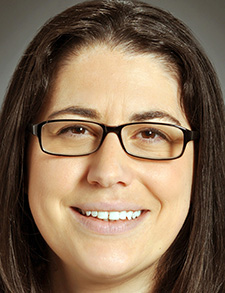Dr. Trope, a pediatric hospitalist at Santa Clara Valley Medical Center in San Jose, Calif., and an affiliated clinical instructor at the Lucille Packard Children’s Hospital at Stanford University in Stanford, Calif., started the presentation by orienting attendees to the opioid use epidemic in the U.S., including sharing relevant history to provide context for the current crisis. She then specifically focused on the epidemiology of overdose deaths in young people. This included how these deaths have been dramatically impacted by fentanyl, with fentanyl now being responsible for 90% of all overdose deaths in teens. Additionally, there is an increasing ability to buy counterfeit pills on social media, with approximately 60% of pills in circulation containing potentially lethal doses of fentanyl.
In 2021, overdose deaths among 10-19-year-olds typically occurred at home (60%), with someone else also at home 67% of the time. In these cases, the teenager was pulseless by the time emergency medical services arrived (60%), and naloxone was given in fewer than one in three overdose deaths. Dr. Trope used these facts to introduce the idea of “the new drug talk” and emphasize the importance of equipping teens with information for themselves and their friends.
The remainder of the time was spent examining the role of screening and treatment for young people with opioid use disorder (OUD). Even though OUD is typically a pediatric-onset condition (two out of three adults with OUD report first use before age 25, and one out of three before age 18), only a minority of youth with OUD are diagnosed. Even fewer receive any treatment, and fewer still are started on medication approved to treat OUD. Dr. Trope made a compelling argument that pediatric hospitalists have a unique opportunity to treat, screen, and address OUD in teens.
Dr. Trope highlighted the medications available to treat OUD and the reasoning for using these medications, including that they save lives. Buprenorphine is a first-line OUD treatment for teens, which reduces overdose and all-cause mortality, but fewer than 5% of teens with OUD have timely access. Dr. Trope shared her experience starting a buprenorphine induction protocol at her institution where youth are admitted to their hospitalist service for induction. The Clinical Opioid Withdrawal Scale assessment is used to assess withdrawal symptoms and naloxone is available at the bedside on admission for the patient to take with them (in case they decide to leave early). She encouraged attendees to reach out to her for more information or with any questions.
Dr. Trope closed by encouraging practitioners to familiarize themselves with the principles of overdose prevention and harm reduction, as well as ways to reduce the stigma surrounding OUD.

Dr. McFadden
Dr. McFadden is a pediatric hospitalist and associate section chief at the Medical College of Wisconsin in Milwaukee. She is also vice chair of SHM’s pediatrics special interest group executive council.

